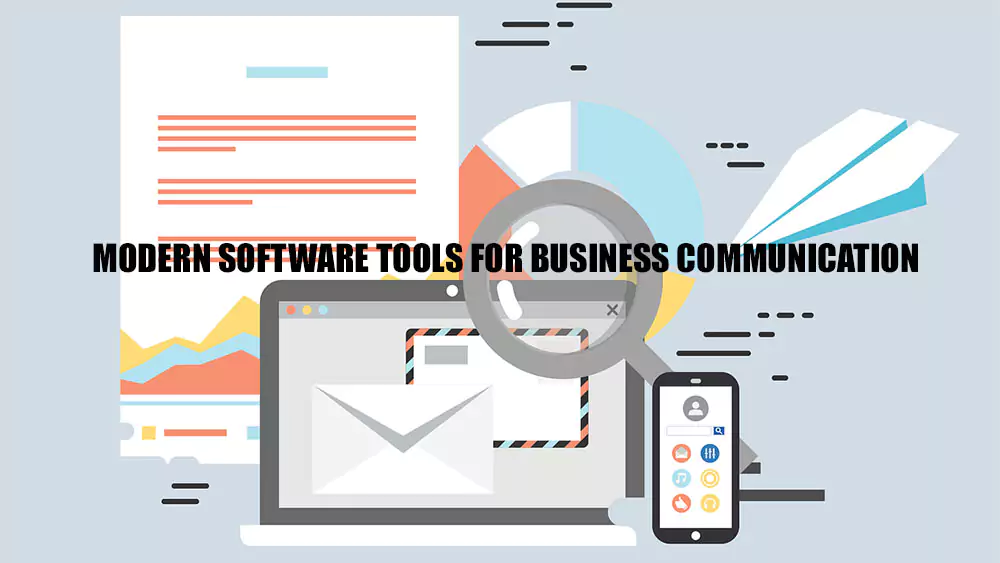How Modern Communication Tools Are Transforming Businesses in the Digital Era

The way businesses communicate has undergone a profound shift. Gone are the days when operations relied exclusively on landlines, fax machines, and in-person meetings. From small startups to global enterprises, companies now operate in real-time across multiple locations, with modern software tools for business communication playing a central role in how information moves, decisions are made, and relationships are built. What once required days of coordination can now happen in minutes, and that speed has redefined the meaning of productivity and responsiveness in the workplace.
Technology is not just a supporting element anymore. It’s the infrastructure of modern business. Communication is no longer a standalone function, it’s a deeply integrated component of project management, customer service, sales, internal collaboration, and recruitment. In this changing environment, organizations that adapt quickly often gain a distinct edge.
Modern Software Tools for Business Communication Trends
Modern software tools for business communication help streamline digital interactions, enable video conferencing, and support hybrid work models efficiently.
6. From Static to Dynamic Collaboration
The shift from email-heavy communication to more interactive platforms such as Slack, Microsoft Teams, and Zoom has transformed how colleagues collaborate across departments and time zones. Instead of working in isolation and exchanging updates at set intervals, teams are now able to operate in shared digital spaces. These platforms allow ongoing dialogue, making feedback cycles shorter and more iterative.
The result is a shift toward a culture of immediacy, where information flows more freely. This dynamic interaction improves decision-making and reduces delays caused by siloed communication. It helps remote and hybrid teams maintain a sense of connection that email chains and scheduled calls often fail to deliver.
5. The Rise of Real-Time Messaging
Instant messaging tools are changing expectations around availability and responsiveness. In industries such as tech, marketing, and logistics, being reachable and responsive has become part of standard professional etiquette. Real-time messaging fosters a more conversational style of workplace interaction. Team members exchange short updates, ask quick questions, and coordinate details without drafting long emails.
This evolution is not just about speed, it’s about tone and accessibility. Colleagues can respond in a more relaxed, human tone, reducing misunderstandings and encouraging openness. The blend of text, emojis, and integrations with calendars or file sharing allows workers to communicate more holistically, which is crucial in fast-paced environments.
4. Integrated Communication as Infrastructure
The next wave of communication technology goes beyond simply enabling conversation. Tools are now integrating with broader business systems such as CRMs, HR platforms, project management software, and customer service databases. These integrations help teams avoid the inefficiencies of switching between platforms or searching for files and data spread across systems.
A sales team might review customer history from the CRM while chatting with a colleague, then schedule a follow-up call using the same platform. This level of integration means less friction, fewer dropped tasks, and a more cohesive workflow. It supports cross-functional collaboration by giving teams shared visibility into projects and priorities.
3. Bridging Physical and Digital Communication
Even in an increasingly digital environment, many businesses still rely on in-person interaction for certain functions. Video conferencing helps bridge that gap by recreating elements of face-to-face communication. Facial expressions, body language, and tone are preserved, making it easier to build trust, negotiate, and resolve issues.
For global businesses, video conferencing removes travel barriers and cuts costs while maintaining human connection. It allows teams to host internal town halls, client onboarding, and training sessions without logistical challenges. The consistency of contact with clients or colleagues, regardless of location, improves engagement and strengthens professional relationships.
2. Choosing the Right Providers for Long-Term Success
Selecting the right technology partner can shape how well a business communicates across its operations. As explained by experts from Gamma Communications NL, a provider of communication solutions for the business market, it often offers more than just software, it brings strategic guidance, implementation support, and ongoing optimization. This relationship becomes even more valuable as the organization grows, diversifies its tools, or adjusts to regulatory demands.
Having the right partner means fewer compatibility issues, better customer support, and access to upgrades that keep pace with technological shifts. It’s about choosing a tool and building a communication ecosystem that evolves with the business.
1. Adapting Communication for Remote and Hybrid Models
As remote and hybrid work becomes standard in many industries, communication tools must support a wide range of needs. This includes scheduling across time zones, asynchronous updates, and fostering a sense of presence among remote staff. Tools that include digital whiteboards, shared documents, and integrated chat help recreate a collaborative office environment, even when the team is distributed.
Remote workers need visibility into goals, deadlines, and team progress. Communication platforms that allow project tracking, status updates, and cross-functional messaging create accountability without micromanagement. Trust and clarity replace constant check-ins and rigid oversight.
Conclusion:

The transformation isn’t about novelty, it’s about usefulness. Companies that pay attention to how people connect, what information flows where, and how that affects outcomes will stay ahead. And as technology continues to evolve, the best results will come not just from adopting new tools, and from learning to use them with purpose.

news via inbox
Sign up and never miss out on the latest news and updates at HighStuff




